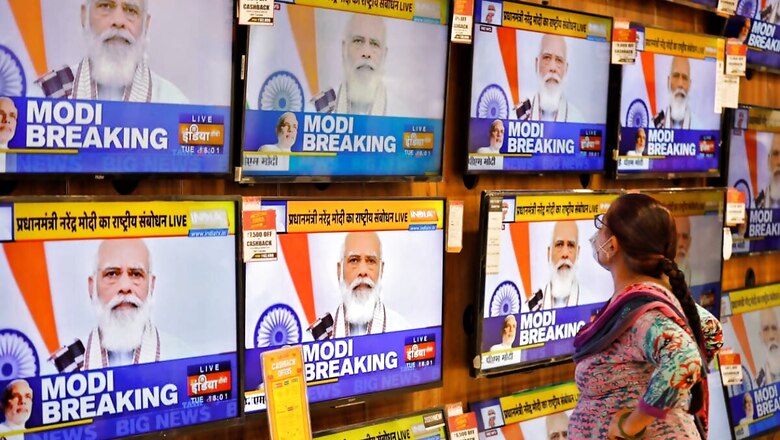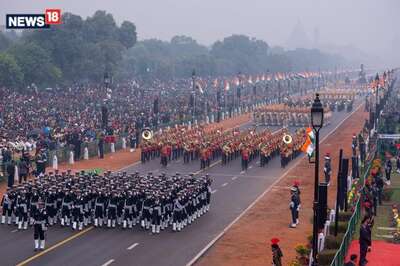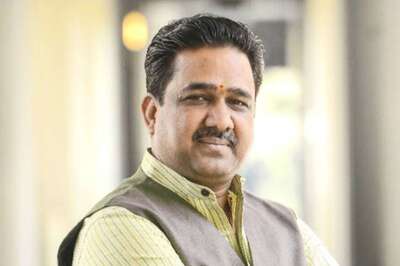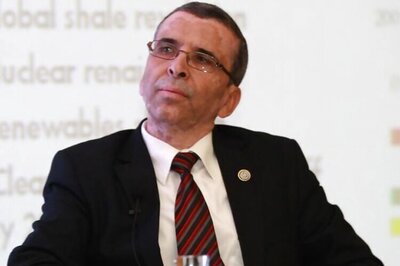
views
In a year of radical change in every other sphere, it was politics as usual: “full of sound and fury, signifying nothing”. Politicians of all hues bickered endlessly as India struggled from crisis to crisis. The Congress continued leaderless and directionless. The BJP lost allies and won elections. The Left protested for the sake of protest.
It was a year of striking visuals: of rioting in Delhi, of migrants returning to their villages, of health workers in PPE gear, of soldiers’ bodies coming home from Galwan, and of farmers blocking highways. But the image that lingered in public consciousness was that of Prime Minister Narendra Modi in his raj-rishi avatar. The challenges of the post-pandemic global reality, he seemed to say, demand both statecraft and spiritual resources.
The Modi makeover went down well with voters, judging from the NDA’s electoral successes in the latter half of the year. It won Bihar thanks to the Modi magic and a stronger-than-anticipated showing by Nitish Kumar, swept the bye-elections and did well in elections to local self-government bodies in Hyderabad, Rajasthan, Assam and Jammu & Kashmir.
The Congress, on the other hand, struggled with numbers all through 2020. Zero, its tally in the Delhi assembly election. Twenty-five, the number of MLAs who defected to the BJP in Madhya Pradesh. Nineteen, the total number of seats (out of 70) it won in Bihar. Twenty-three, the number of Congress leaders who wrote to the interim party president, demanding change.
Politics hit its lowest point in mid-year, with the death of actor Sushant Singh Rajput. As Covid cases in Maharashtra surged past 1.8 million, the Shiv Sena-led government plunged into a proxy war with the Centre. Each side preyed on soft targets in Bollywood and the media, apparently heedless of mounting Covid-induced deaths.
The theatre of the absurd then shifted to Uttar Pradesh, with the enactment of the so-called ‘love jihad’ law, a misnomer for an absurdly strict anti-conversion statute. The law did not forbid interfaith marriage but contained enough fuzzy language to give plenty of scope for harassment by the police and irate parents of the bride/groom.
That such an obnoxiously paternalistic piece of legislation did not provoke an outcry commensurate with its chauvinism spoke volumes about the gender-insensitivity of political class. The Opposition, which had taken to the streets to protest the ghastly Hathras case, confined itself to platitudes.
All its firepower was reserved for the Farm Acts of 2020. In a stunning volte face, the Congress demanded a repeal of the very agricultural reforms it had sworn, in 2019, to champion. Regional parties, even in states facing no farmer unrest whatsoever, found a convenient club with which to bludgeon the BJP.
To the 2020 lexicon of terms like ‘pandemic’, ‘community transmission’, ‘social distancing’, ‘lockdown’, ‘asymptomatic’, ‘comorbidity’ and ‘WFH’ was added ‘MSP’ or Minimum Support Price.
It was the year that the Opposition delved into the BJP’s bag of semiotic tricks and discovered that optics, aspersions and deflection yielded more political capital than debate. The Citizenship Amendment Act (CAA) was presented as an instrument of disenfranchisement, the Farm Acts as pro-corporate and anti-farmer, and Shaheen Bagh and Singhu Border as a reclaiming of political agency by ‘the people’.
The attempts to create a climate of protest had to contend with Modi’s ability to reflect the subliminal hopes of the silent majority. The progressive, incorruptible vikas purush of 2014 and the warrior-king of 2019 became the paterfamilias, reassuring, guiding and occasionally chiding his ‘family’, urging them to be mindful of their social dharma.
If an increasing section of citizens saw an abuse of power, an undermining of institutions and a mishandling of the economy, still more saw Modi as a harbinger of a virus-vanquishing vaccine, a resurgent economy and geo-political realignments advantageous to ‘Atmanirbhar Bharat’.
Meanwhile, the pandemic eased, foreign investment (FPI) inflows breached all records and India’s economic recovery was pitched as more V- than U-shaped. Politicians turned their attention to forthcoming elections in Assam and West Bengal, with the BJP quicker off the mark as usual.
India’s annus horribilis draws to a close and 2021 dawns with the promise of sweeping reconfigurations. Protocols against pandemic will be put in place, digital technology leveraged in all fields, the borders and the economy China-proofed and new geostrategic imperatives negotiated. But whether the shape of Indian politics will change remains to be seen.
Read all the Latest News, Breaking News and Coronavirus News here


















Comments
0 comment